Three ways to use an ASX covered call ETF
Covered call strategies on the S&P/ASX 200 Index can puzzle investors. While the index itself, the S&P/ASX 200, is perfectly familiar, many wonder what is ventured and what is gained by selling covered calls on it. (Covered call strategies involve selling call options against shares investors already own, in an effort to generate income, explainer here.)
From Global X’s perspective, there are three reasons why an S&P/ASX 200 covered call ETF could be used as a part of a well-diversified portfolio. They are:
- Adding additional income to a portfolio.
- Diversifying income sources within a portfolio.
- Potential outperformance during bear markets.
We go through each below.
Scenario #1 – Investors Looking for Income
Covered call strategies are popular around the world, as they have historically paid some of the highest, most reliable yields. This is reflected in the chart below, which compares the yields of indexes and ETFs. Although these additional yields come with risks – in particular, the loss of potential upside – which we discuss later.
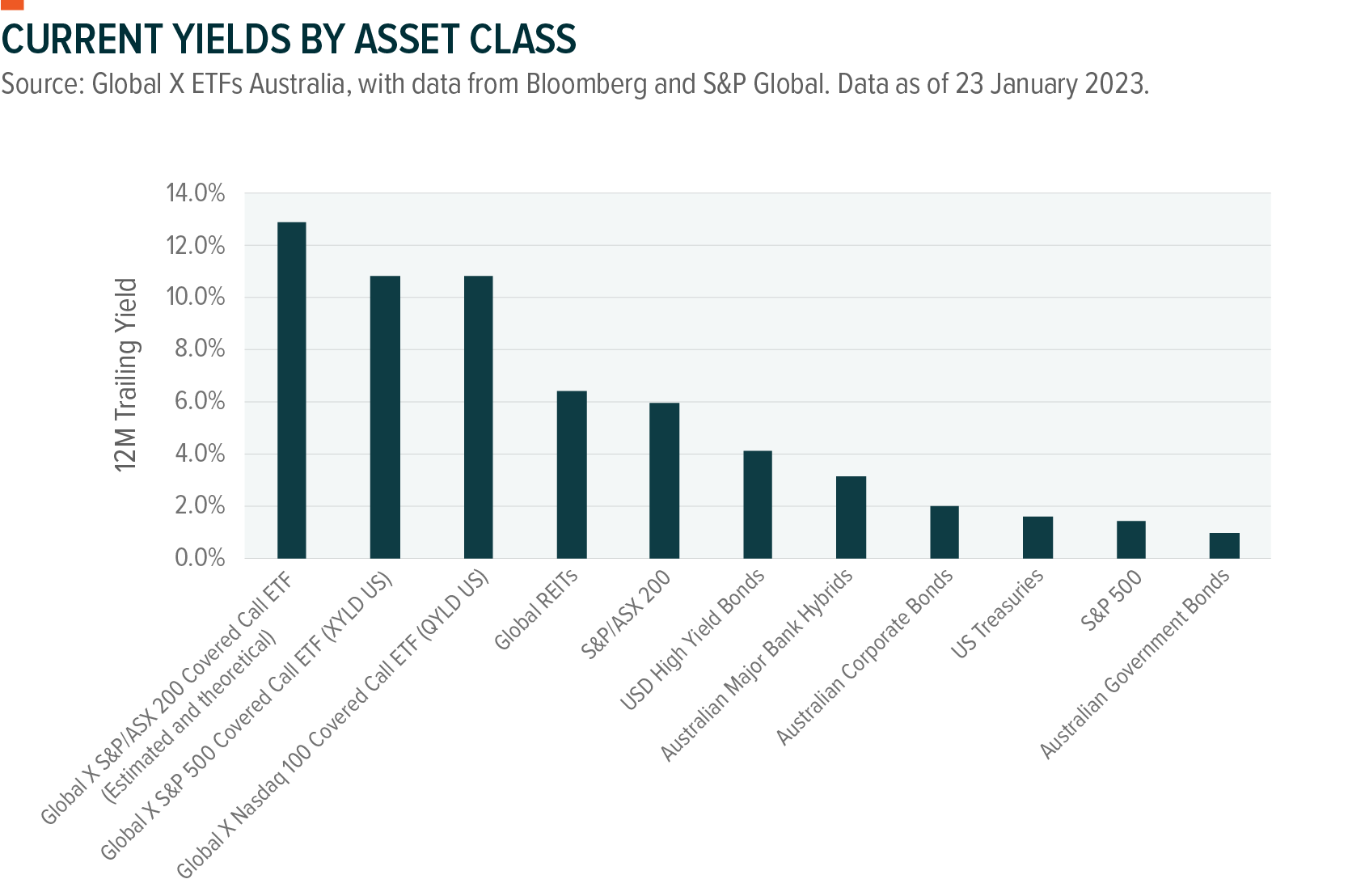
Why are covered call yields so high? The main reason is the option premiums that these strategies generate by selling calls. Call option premiums reflect what traders are willing to pay to bet that share prices will rise above a given threshold, or strike price. Knowing in advance whether a company’s share price will rise above a given threshold is, of course, impossible. So, traders value options primarily based on three things that they can know:
- Time value – the more distant future in which a call option expires, the more valuable it becomes. This is because the longer the stretch of time, the greater the possibility that share prices could rise above a certain threshold.
- Volatility – the more volatile share prices are, the more valuable call options become. Volatile shares are more likely to produce those sudden sharp price increases, which breach high thresholds.
- Strike prices – the lower an option’s strike price, the less a company’s share price has to rise for it to become worth something. As small share price jumps are more likely than big ones, options with lower strike prices are typically more valuable.
Taken together, this means selling call options with long expiry dates and lower strike prices in volatile markets generates higher yields, as traders fancy the odds of share prices rising above certain thresholds.
We can see what this means for covered call strategies on the S&P/ASX 200 by looking at how yields change as volatility rises. The chart below shows how yields generated from selling (at-the-money) call options on the ASX 200 are highest when volatility spikes.
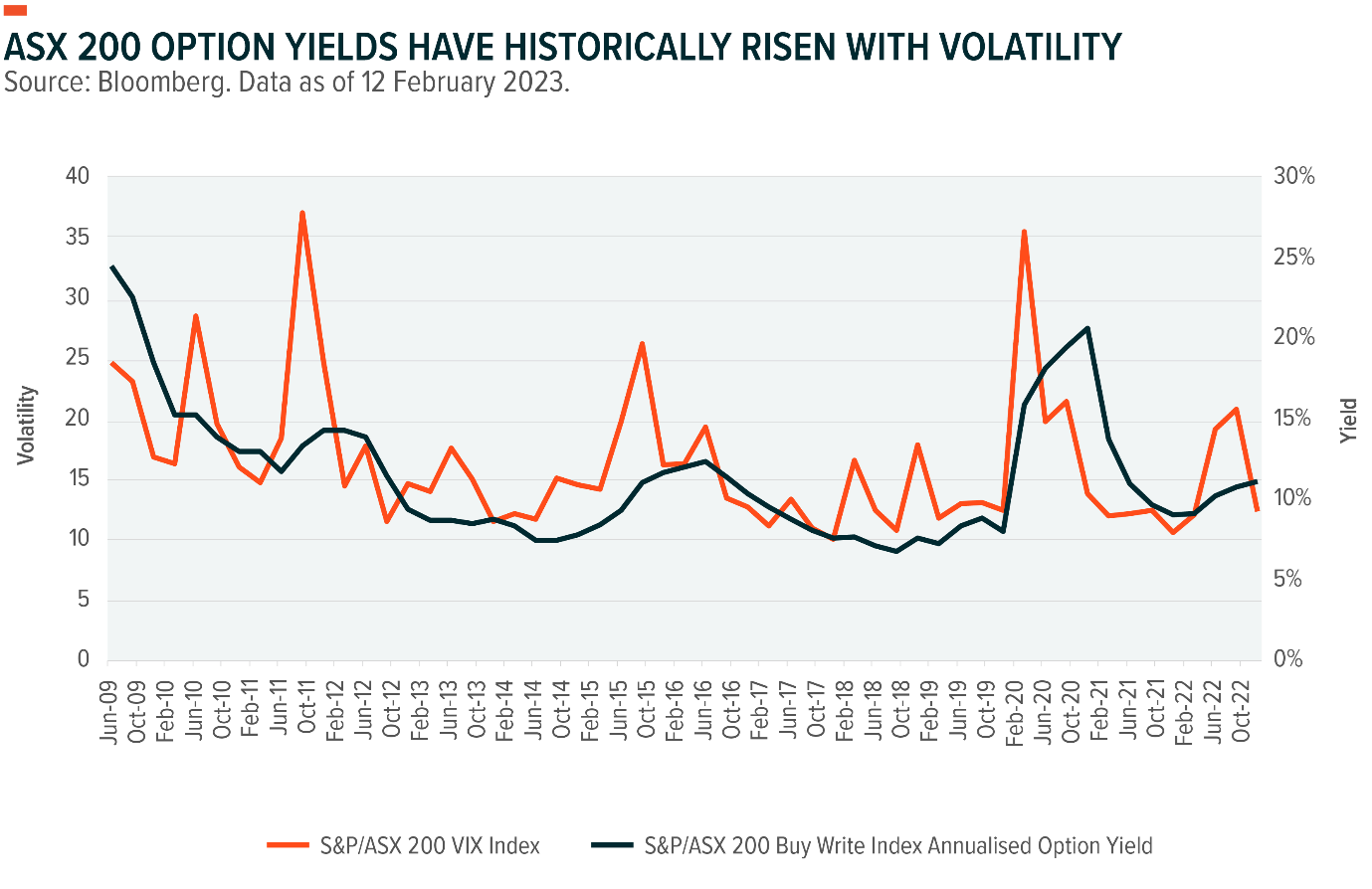
Scenario #2 – Diversifying Sources of Income
When looking for income, Australian investors often turn to dividend-paying shares. Australian shares pay generous dividends by international standards (shown in the graph below). And in some cases, those dividends come with franking credits as an added bonus.
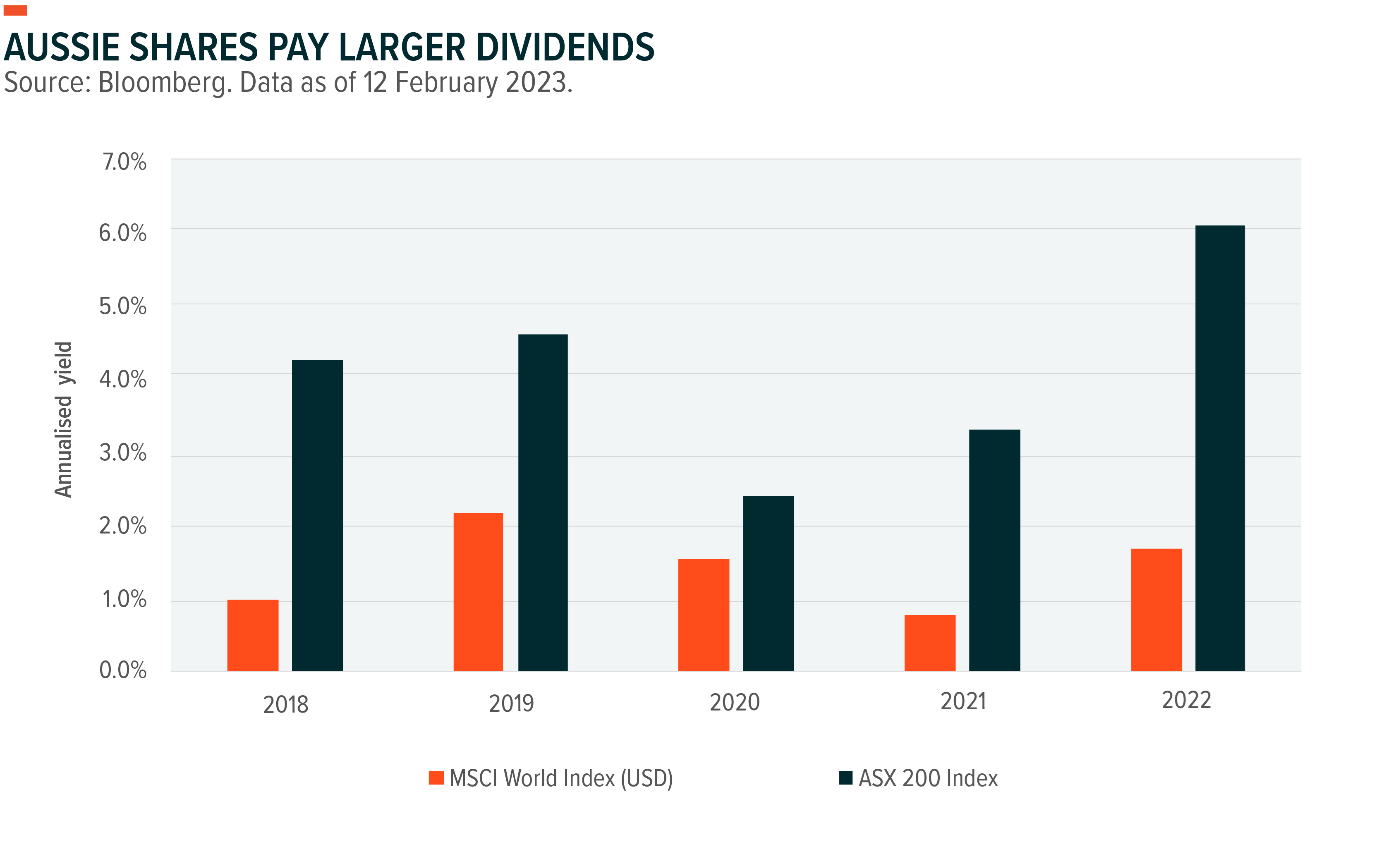
As covered call strategies hold the shares that they write options against, they receive dividends and franking credits from shares in the same way long-only investors do. (Dividends and franking are usually excluded from options contracts). However, the income they generate is arguably more diversified than a long-only portfolio of S&P/ASX 200 shares, as option premiums provide an extra source of yield.
The importance of diversifying a portfolio across asset classes and geographies is well known. But the same principle applies for income sources. By adding an extra source of income, covered call strategies can provide investors with another line of income in the option premiums.
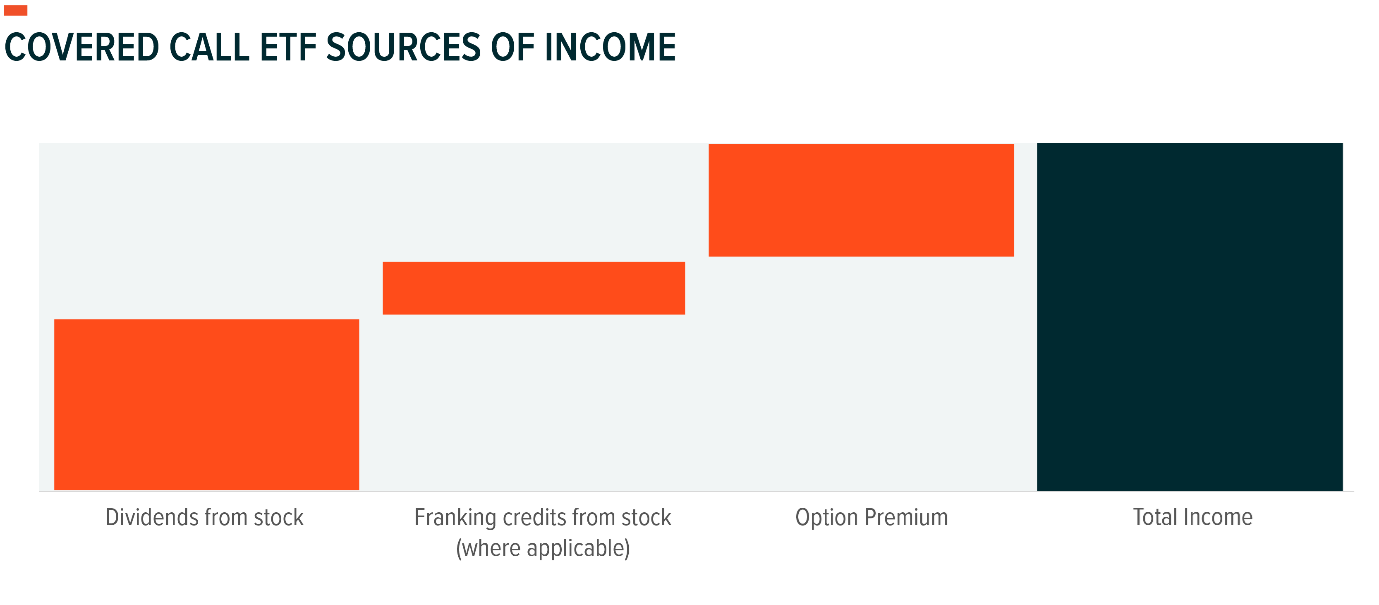
Options premiums tend to provide a natural hedge against dividends drying up. The reason for this is that ex-dividend dates cause share prices to fall, by an amount corresponding to the size of the dividend. The bigger the dividend, the bigger the ex-dividend drop. Options markets price in these ex-dividend drops in the form of smaller premiums. All else being equal, this can mean stocks with higher dividends can generate smaller call premiums during their expected dividend months.
Scenario #3 – Outperformance in Bear Markets
Different investment strategies are suited to different markets. The sweet spot for covered call strategies is sideways choppy markets. During these times, premiums rise from the heightened market volatility, while the shares neither rise above nor fall below the value of the premiums received.
That being said, covered call strategies will outperform during bear markets. This outperformance can be looked at in two ways.
First, in a bear market, the income generated from selling calls can partly offset declining share prices and as call options are unlikely to get exercised during falling markets, premiums can be retained in full. This outperformance in bear markets can be measured by looking at the difference in maximum drawdowns between the S&P/ASX 200 Total Return Index and the S&P/ASX 200 Buy Write Index, as seen in the graph below.
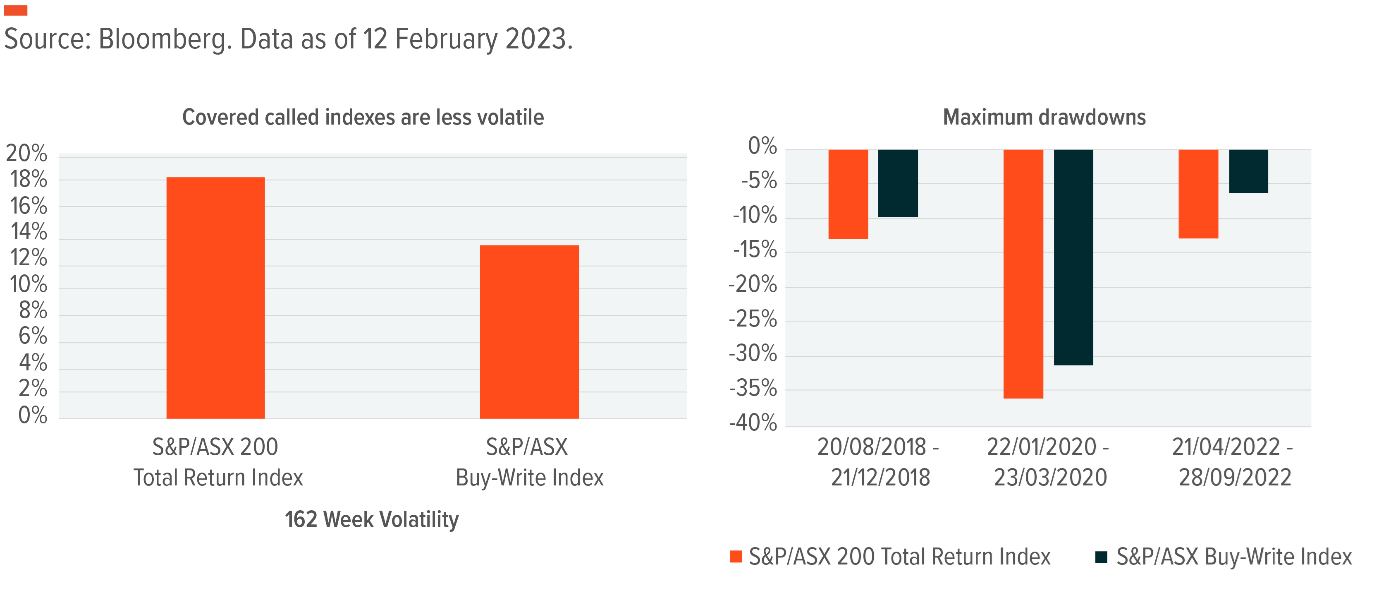
Second, the same thing can be seen, in a different way, when looking at how covered call strategies interact with volatility—which usually hits its highest levels during major bear markets (such as the Covid-19 drop in 2020 or the 2008 Global Financial Crisis). By selling calls, covered call strategies effectively become short sellers of expected volatility. That is, they hope that the market is overestimating how volatile things will be in the future. By extension, they hope the market is overpaying for the chance to bet on rising share prices.
And in many cases, the market does in fact overestimate how high volatility will be in the future. And it tends to do this when volatility is already high, such as during sharp sudden bear markets. This effect – sometimes called the “volatility risk premium” – is another reason that covered call strategies can do best in bear markets.
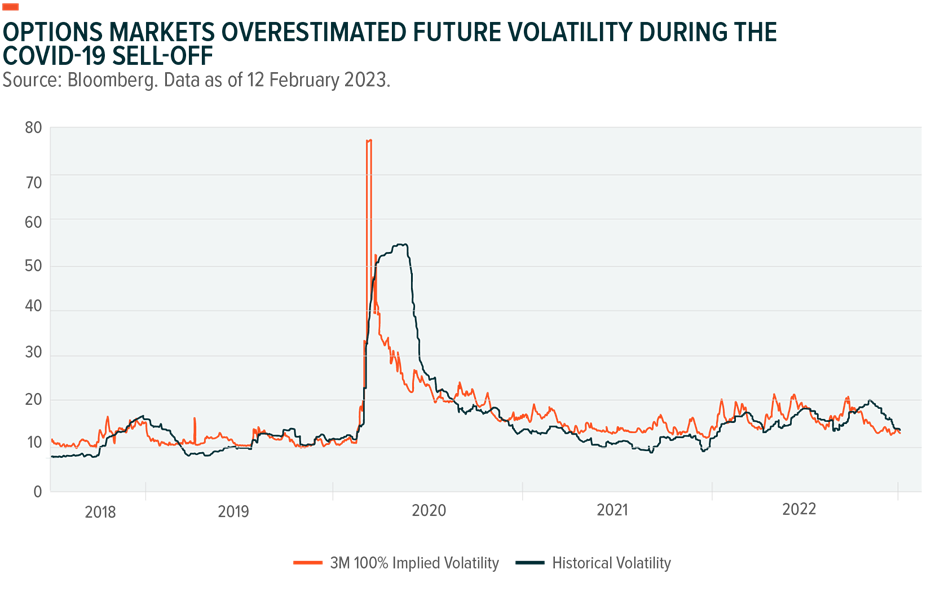
Risks – Be Prepared for a Bull Market
The above three scenarios illustrate where covered call strategies are most appropriate. However, it should be noted that there are scenarios where covered call strategies are likely to underperform. Most obviously these include strong bull markets. By selling call options, the holder foregoes the opportunity to fully benefit from increases in the value of the S&P/ASX 200 Index above the exercise prices of such options. As such in scenarios where investors are looking to fully participate in a rising share market the strategy may not be appropriate.
Beyond Ordinary ETFs
For more than a decade, our mission has been empowering investors with unexplored and intelligent solutions
To learn more about what Global X ETFs can do for your portfolio please visit our website.
3 topics
1 stock mentioned

